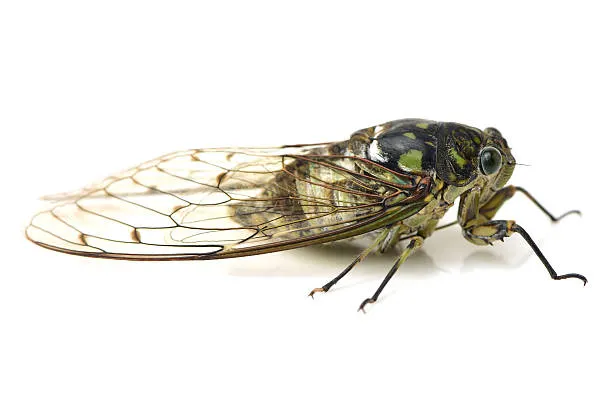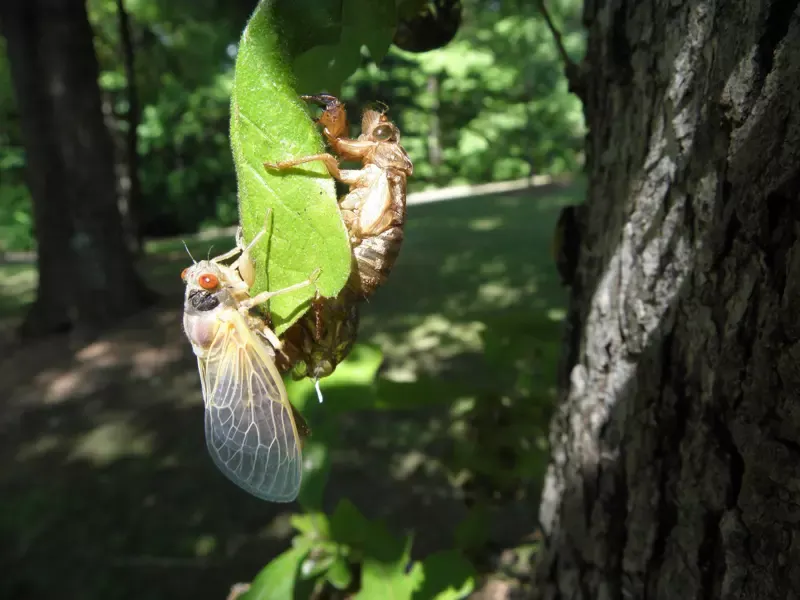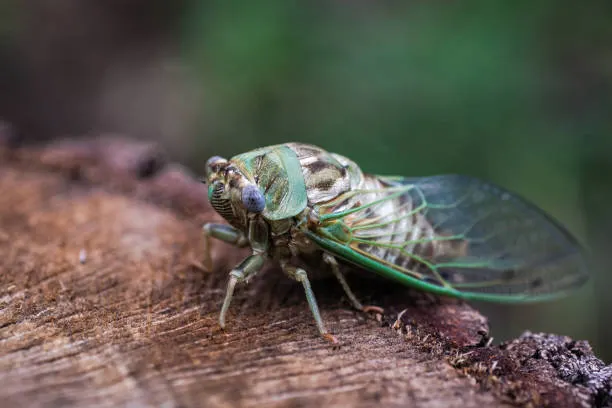“Cicadas: Nature’s Loudest Insects and Their Secret Lives”

Cicadas are one of the most intriguing insects on Earth—famous for their incredibly loud calls, mysterious life cycles, and synchronized emergences. These buzzing insects appear in massive numbers, vanish for years or even decades, and return in a dramatic display of sound and life. From ancient myths to cutting-edge biology, cicadas have fascinated people across the world for thousands of years.
This article explores everything you need to know about cicadas, including their life span, sound-making abilities, habitat, behavior, types, and their role in ecosystems.
1. What Are Cicadas?
Cicadas are insects belonging to the order Hemiptera and the family Cicadidae. There are more than 3,000 known species of cicadas worldwide. Most are found in tropical and temperate climates, particularly in North America, Australia, and Southeast Asia.
2. Two Main Types: Annual and Periodical
Cicadas are classified into two main groups:
- Annual cicadas: Appear every year; have 2–5-year underground lifecycles but emerge yearly because different broods overlap.
- Periodical cicadas: Appear every 13 or 17 years in large synchronized groups (called broods) mostly in eastern North America.
Periodical cicadas spend most of their lives underground and emerge en masse for a few weeks to mate and die—a rare phenomenon in the insect world.
3. Cicadas Live Most of Their Lives Underground
Cicadas spend up to 99% of their lives underground as nymphs. During this time, they feed on tree root sap and go through multiple molts. When the time is right (usually triggered by soil temperature), they dig to the surface to molt one final time into winged adults.
4. They Are Loudest Insects on Earth
Male cicadas produce a loud, vibrating mating call using a special organ called a tymbal, located on the sides of their abdomen. The rapid contraction and relaxation of tymbal muscles create the distinctive buzzing or clicking sounds.
- Some cicada calls can reach over 100 decibels, which is as loud as a chainsaw!
Different species produce different sounds, and females are attracted to males of their own species by these unique calls.
5. Mating and Life Cycle
Once they emerge, adult cicadas live for only a few weeks. During this time:
- Males call for mates.
- Females respond silently and lay hundreds of eggs in slits on tree branches.
- After hatching, the tiny nymphs fall to the ground and burrow underground to start the cycle again.
The entire lifecycle is a dramatic example of synchronization and survival strategy, overwhelming predators with sheer numbers (a concept called predator satiation).
6. Cicadas Are Harmless to Humans
Despite their size and sound, cicadas:
- Do not bite or sting.
- Do not destroy crops (though they may cause minor tree damage when laying eggs).
- Are not poisonous or dangerous.
Some cultures even eat cicadas as a seasonal delicacy due to their high protein content.
7. They Play a Vital Role in Ecosystems
Cicadas contribute in many ways:
- Their emergence provides a food source for birds, reptiles, fish, mammals, and even humans.
- Their burrowing aerates the soil.
- Their decaying bodies fertilize plants after death.
- Their egg-laying can prune trees, stimulating new growth.
8. Cicadas and Climate Signals
Scientists believe cicada emergences can provide insight into climate patterns and soil temperature changes. For instance, cicadas tend to emerge when soil reaches about 64°F (18°C) at a depth of 8 inches.

9. Cicadas in Culture and Mythology
Cicadas have long held symbolic meaning:
- In ancient Greece, they were associated with immortality and resurrection.
- In China and Japan, they symbolize rebirth, youth, and spiritual realization.
- Many Native American tribes viewed cicadas as harbingers of summer.
10. 2021’s Brood X and Beyond
One of the most famous cicada events, Brood X, emerged in 2021 after 17 years underground. It covered more than a dozen U.S. states. Such events are both scientific marvels and public spectacles, drawing media attention and interest from researchers and nature lovers alike.
11. Cicada Predators and Survival Strategy
Cicadas are eaten by:
- Birds
- Squirrels
- Frogs
- Snakes
- Bats
- Even dogs and cats
To survive this onslaught, periodical cicadas use a unique tactic: emerge all at once in huge numbers, so enough survive to reproduce.
12. Cicada Killer Wasps
A major predator of cicadas is the cicada killer wasp, which paralyzes cicadas and brings them to underground burrows as food for their larvae. Despite their intimidating name and size, these wasps are not aggressive to humans.
13. Unique Cicada Species Around the World
Some interesting species include:
- Green grocer cicada (Australia): Known for its vivid green color.
- Black prince cicada (Australia): Has a rare and haunting song.
- Magicicada septendecim (USA): One of the famous 17-year cicadas.
- Tanna japonensis (Japan): Often featured in anime and art.
14. Threats to Cicadas
While cicadas are resilient, threats include:
- Habitat loss
- Urban development
- Pesticide use
- Climate change, which may disrupt their synchronized emergence
Some populations are shrinking, and conservation efforts are underway in certain regions.
15. Cicadas in Art and Media
Cicadas have appeared in:
- Literature: Symbolizing life cycles, rebirth, or eternal return.
- Japanese haiku and summer poems.
- Cartoons and anime, representing the background sounds of hot summer days.

Conclusion
Cicadas are far more than just noisy bugs—they are masters of time, evolutionary wonders, and vital components of ecosystems. Their synchronized life cycles, thunderous songs, and brief appearances are some of the most dramatic events in the natural world. Whether you hear their summer serenade in your backyard or witness a 17-year emergence, cicadas offer a fascinating glimpse into nature’s rhythms.



